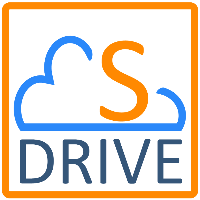Introduction
Welcome to S-Drive! Here you’ll find the layout of this guide and some terminology.
S-Drive is a document storage solution that is native to Salesforce. With S-Drive, files are stored in Amazon AWS S3 bucket and accessed through Salesforce using S-Drive file records. Files can be organized into folders and there is no limit to the size of files that can be uploaded or stored.
Layout of this Guide
This INTRODUCTION section explains the various pieces of S-Drive.
In GETTING SET UP, we will talk about setting up the accounts you need as prerequisites to using S-Drive.
INSTALLING AND ACTIVATING S-DRIVE tells you how to find S-Drive from the AppExchange and walks you through setting up your AWS access and bucket, and connecting your Salesforce org though our portal.
CONFIGURING S-DRIVE ON STANDARD OBJECTS shows you how to add the S-Drive file area to standard object pages so you can begin uploading and accessing files. At this point, you are ready to use S-Drive.
DISPLAYING "S-Drive" AND "S-Drive Configuration" TABS helps you set up these tabs for easy access.
CONFIGURING S-DRIVE ON CUSTOM OBJECTS explains how to create an S-Drive File Object for a standard or custom object other than Accounts, Cases, etc.
S-DRIVE CONFIGURATION TAB walks you through all the things an admin can configure for the organization.
ADVANCED FEATURES gives a quick overview of S-Drive's features beyond simply uploading and accessing files. More information can be found in the User's Guide.
PROFILE PERMISSIONS, OWD, AND SHARING RULES talks about how S-Drive works with Salesforce's sharing settings and profile permissions.
S-DRIVE IN SALESFORCE.COM COMMUNITIES explains how to add S-Drive to your community.
S-DRIVE SALESFORCE MOBILE APP CONFIGURATION AND USER GUIDE shows you how to set up S-Drive for Mobile.
S-DRIVE PORTAL gives more detail on the S-Drive portal account, including information about billing.
Terminology
S-Drive Tab
With S-Drive, you can upload files to any standard or custom object record. In addition, there is an "S-Drive Tab" where you can store files that aren't related to any specific object. This can be used for company-wide documents for example. Files on the S-Drive Tab (not associated with a standard or custom object) are stored in an object called S3Object.
S-Drive File Objects
Each custom or standard object that you want to use S-Drive with has a corresponding S-Drive File Object where the information about the files is stored. This is a custom object that has a master-detail relationship with the object the files are associated with. For example, Accounts has an associated object called AccountFiles. For Accounts, Cases, Contacts, Opportunities and Leads objects, S-Drive File Objects have already been provided as part of the S-Drive package. For other standard objects, or for your own custom objects, you can create the associated S-Drive file object through the S-Drive Configuration tab. These objects should have permissions enabled in the profiles of users using them.
Other S-Drive Objects
In addition to the S-Drive objects that hold file information, there are other S-Drive objects that relate to various features of S-Drive. These objects should have permissions enabled in the profiles of users using S-Drive.
AttachmentSyncs
File Activities
MyS3Objects
Previews
S3Configs
S3Objects
SDriveCustomActions
SQueues
SURLS
SURL Hits
